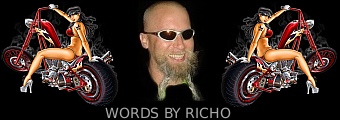




|

|

|
THE 1969 DODGE CHARGER Following the success of the 1968 Steve Mcqueen movie Bullitt, big block Dodge Chargers were quickly becoming a hot ticket item. The factory was cooking up something very special for 1969. The '69 Dodge Charger presented a vast array of options for the customer. There was a base model, a more luxurious SE edition, a hot-performing V8 R/T version and two supercar variants: the 500 and Daytona. Engine options included the venerable 225-cid Slant Six and five V8s, the most powerful of which was the legendary 425hp / 426-cid "Street Hemi." The available transmissions were three and four speed manuals and the bulletproof three-speed TorqueFlite automatic. Amazingly, the car came in just one body style - a two-door hardtop. The 1969 Dodge Charger was an update of the completely revamped '68 model, which meant it was built on a 117-inch wheelbase with Chrysler's familiar torsion-bar suspension under the nose and leaf springs in the back. New styling touches for base and R/T Chargers included a vertical center divider in the grille and horizontal taillights. Enginewise, there were two different 383 four barrel motors. One was just the 383 four barrel (as noted on the "pie tin" on the air cleaner) and was used in Charger S/E cars with A/C and rated at 330 HP. This motor came from the factory with a Holley single pumper carb on it. In 1969 this motor was painted turquoise. The other was the 383 magnum four barrel. It had a Carter AVS carb, a windage tray in the oil pan and was rated at 335 HP. The motor was also used in Road Runners and Super Bee's as well. The "pie tin" on this air cleaner said "383 magnum". The magnum motor was painted the famous "hemi orange" color.
Charger's sporty car appearance in 1969 was enhanced by the use of a divided grille with six functional air vents in the divider piece, resembling dual intakes. Near wall to wall rectangular tail lights which were recessed replaced the dual, round projecting lights used on the 1968s. These lights are surrounded by a black insert as they were in 1968 to retain Charger's highway identity. A high rate rallye suspension, including sway bar, was standard. The R/T and 500 models had special handling suspension package which included heavy duty torsion bars, heavy duty shocks, extra heavy duty rear springs and sway bar. The long list of options included automatic speed control, front disc brakes, tachometer, rear window defogger, AM, AM/FM, and A M/Stereo Tape radios.
In the Charger R/T, which accounted for 21 percent of 1968 Charger sales, the 440 C.I.D. Magnum 375 H.P. power plant was standard and the 426 C.I.D., 425 H.P. Hemi was optional. Total production for the year was 89,199 units. The Charger 500 The Charger 500 was designed for the performance-minded driver. The rear window was slanted to be flush with the trailing edge of the rear window pillars, the grille was flush mounted instead of recessed to improve airflow and headlights were fixed not concealed. The 500 was powered by the 426 cubic inch Hemi engine. It was built to meet a NASCAR requirement to allow Chargers to race on the stock car circuit and flush mounting provided a tremendous aerodynamic advantage over the stock charger shape.
An even wider array of vinyl top choices were optional: tan, green, black, and white. The standard engine was the 318 cubic inch V8 but customers could also choose the 225 cid slant six (500 units sold), 383 cid V8 (either 2bbl or 4bbl carb), 440 cid V8 or 426 cid hemi V8.
The full size Charger Daytona was tested with an 18 in (460 mm) nose at the Lockheed-Martin facility in Georgia. The test was a runaway success and the project greenlighted. The nose piece was only part of the innovation however, the Charger Daytona also receiving the huge 23 in (580 mm) tall wing in rear. This wing was bolted through the rear quarter panels and into the rear subframe for structural integrity at speed. The height of the Charger Daytona's wing also give the car amazing directional stability at speed as well. The engineering model was tested on the Michigan Proving Grounds on July 20, 1969. It was clocked at 205 mph (330 km/h) with a small 4-bbl carburettor. The new nose cone made 1,200 pounds of downforce and the rear wing made 600 pounds. The Daytona introduced to the public had a fiberglass nose without real headlamps and a wing without streamlined fairings. The media and public loved the car but were mystified by the reverse scoops on the front fenders. The PR representatives claimed it was for tire clearance. In reality they reduced drag by a further 3%.
433 units were 440 Magnum engined models (139 4-Speed and 294 Torqueflite) 70 were 426 Hemi variants (22 4-Speed and 48 Torqueflite)
Engine Specs:
340 V8 / 4-bbl. / 8.8:1cr / 275hp @ 5000 / 340 lbs-ft. @ 3200
383 V8 / 4-bbl. / 9.5:1cr / 330hp @ 5000 / 425 lbs-ft. @ 3200
383 V8 Magnum / 4-bbl. / 9.5:1cr / 335hp @ 5200 / 425 lbs-ft. @ 3400
440 V8 Magnum / 4-bbl. / 9.7:1cr / 375hp @ 4600 / 480 lbs-ft. @ 3200
440 V8 SixPack / 3 x 2-bbl. / 10.5:1cr / 390hp @ 4700 / 490 lbs-ft. @ 3200
426 V8 Hemi / 2 x 4-bbl. / 10.25:1 / 425hp @ 5000 / 490 lbs-ft. @ 4000
|

Enjoy this article ? The site ? Would you buy me a beer for my efforts?


|

|

|